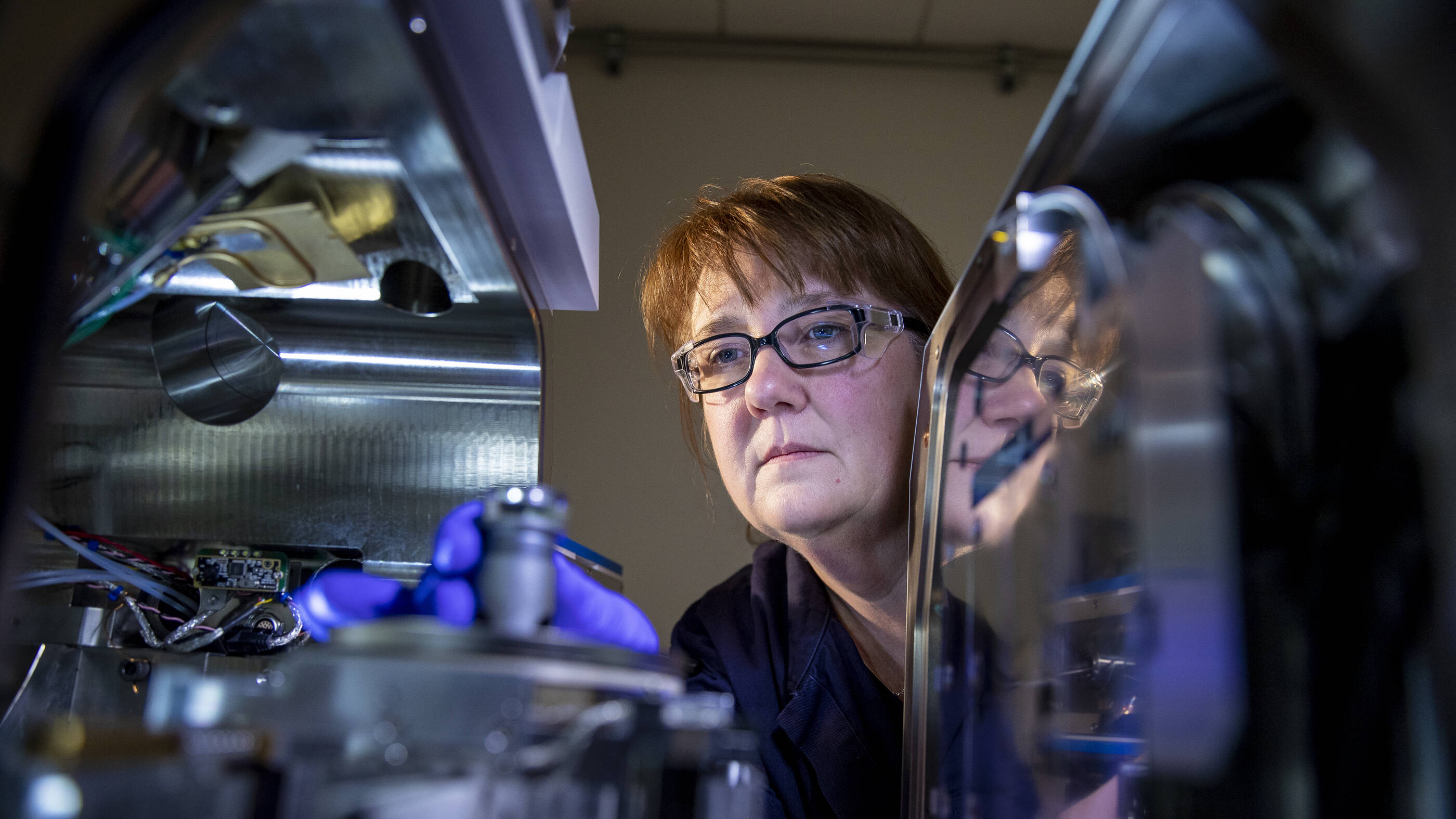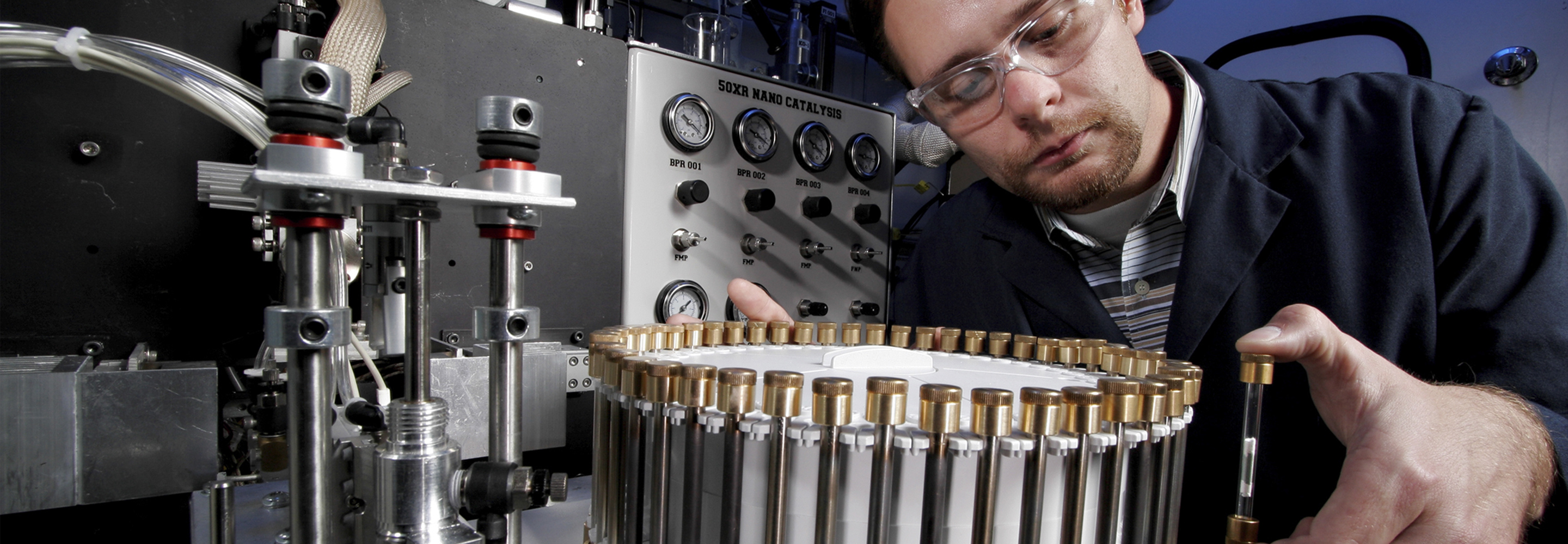selected item
ExxonMobil invests $1 billion per year in energy research, emerging technologies
Our approach
To support this, ExxonMobil is founded on a culture of science and technology. We employ more than 2,200 Ph.D scientists and 5,000 employees at our research and technology divisions around the world. Each year, we invest around $1 billion on corporate research and development efforts. Our goal is to develop breakthrough technologies that can benefit our business and have a positive impact on society and the environment.
Research and development
ExxonMobil conducts cutting-edge R&D through in-house efforts, via partnerships with other industries and by funding academic and other nongovernmental research projects. We are proud to say that as a result of these research and development initiatives, ExxonMobil was named one of the top 100 global innovators by Thompson Reuters in 2015 for our leadership performances in overall patent volume, patent-grant success rates, global reach and invention influence.
White paper process
In 2007, we started applying a white paper process to explore emerging technologies. These studies help to educate the company on emerging technologies, define our potential contribution to the science and assess the future applicability of the technologies to our businesses. The Corporation has engaged experts from a variety of disciplines within functional research labs to write white papers on topics ranging from biofuels to nanotechnology. In the course of developing these papers, ExxonMobil may determine that a particular technology warrants future investment.
At our core, we’re a technology company. We have 20,000 scientists and engineers, including more than 2,200 with Ph.Ds. We spend about a billion dollars a year in researching and developing new technologies, including potential breakthroughs, like algae for biofuels, fuel cells for carbon capture and reverse osmosis for more efficient manufacturing processes.
From innovation to deployment
As a technology moves from concept to research and application, ExxonMobil applies a consistent management approach.
The standard process for technology investment requires assessing technical feasibility through R&D. ExxonMobil’s research functions follow a stage-gate research management system to progress technologies from the early stages of innovation through the final stages of deployment. Researchers partner with the business lines to determine the business benefit of a technology, establish research and development goals and timelines, steward independent project reviews and authorize project funding.
Time horizons for these projects vary significantly. For example, we began evaluating remote gas detection in 2007. Researchers at ExxonMobil Research Qatar (EMRQ) determined its technical feasibility in 2010. In 2011, EMRQ partnered with Louisiana State University Fire School to conduct field testing. In 2014, ExxonMobil Upstream Research Company awarded the first commercial license for the InteliRed remote gas detection system to co-developer Providence Photonics, LLC.
Breakthrough technologies can take much longer to develop. More than 30 years ago, ExxonMobil researchers hypothesized that freezing the carbon dioxide (CO2) that is sometimes produced from underground natural gas reservoirs could be a more efficient approach to separation rather than an impediment. Now, this hypothesis has become a reality. ExxonMobil Upstream Research Company has completed the testing of the Controlled Freeze Zone™ (CFZ) technology at a Commercial Demonstration Plant (CDP) in our LaBarge, Wyoming gas facility. The CDP successfully and cost effectively processed a wide range of sour gas feeds and separated CO2 from natural gas into a high-pressure stream, ideal for use in sequestration or in enhanced oil recovery. Based on the success at LaBarge, CFZ technology is now ready for commercial use.
Related content

Collaborating with leading universities to meet global energy demand
ExxonMobil has worked with dozens of leading universities and academic research institutions around the world as part of our commitment to finding meaningful and scalable solutions to meet global energy demand and reduce emissions.
Advancing Science: Partnering with the Department of Energy’s National Labs
ExxonMobil will work with the Department of Energy’s National Labs to bring lower emission technologies to commercial scale. This work includes collaborative research in areas such as biofuels, carbon capture and storage, and lifecycle analysis.

